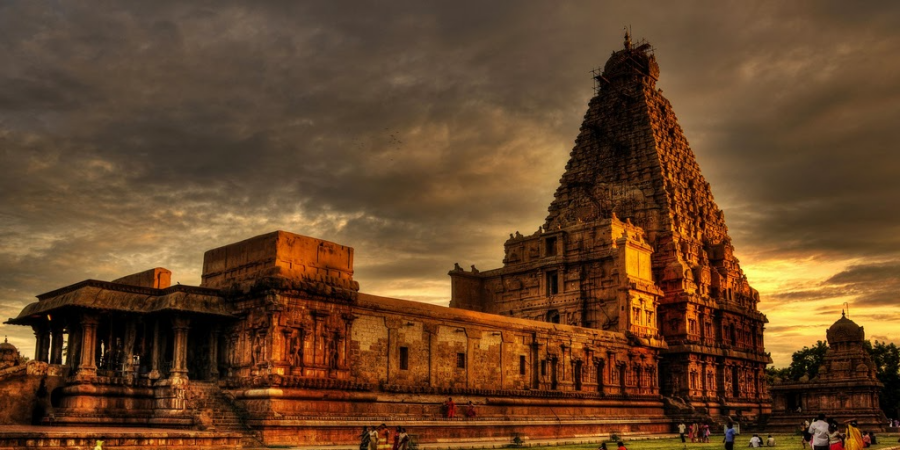

The Brihadeeswarar Temple, also known as the Big Temple, is one of the grandest monuments of South Indian architecture. Situated in Thanjavur, Tamil Nadu, it was built during the reign of the Chola king, Raja Raja Chola I, between 1003 and 1010 AD. Dedicated to Lord Shiva, this UNESCO World Heritage Site is a symbol of the cultural and religious prosperity of the Chola dynasty, which was among the most powerful kingdoms in South India.
This temple, an example of Dravidian architecture, was constructed entirely from granite, a remarkable achievement considering the technology and transportation limitations of that era. Standing at around 66 meters (217 feet) high, the vimana, or tower, above the main sanctum is one of the tallest temple towers in India. It is topped with an 80-ton stone carved into a dome shape, believed to have been placed using an inclined plane that stretched several kilometers. This massive, single granite stone remains a marvel, symbolizing the engineering capabilities of the Cholas.
The temple complex is filled with exquisite carvings, frescoes, and sculptures. It includes one of the largest statues of Nandi (the sacred bull) in India, measuring about 6 meters long and 3.7 meters high, carved from a single block of granite. The temple walls contain over 100 inscriptions in Tamil, which detail the social, political, and religious life of the time, as well as donations made by Raja Raja Chola and his successors to maintain the temple. These inscriptions offer valuable insights into Chola governance, religious practices, and the empire's devotion to art and culture.
Inside, the sanctum sanctorum houses a massive Shiva lingam, the primary deity worshipped in the temple. The inner walls feature murals and frescoes depicting Hindu mythology, including scenes from the life of Raja Raja Chola. Some murals portray the king’s devotion and his court’s dedication to Hinduism, emphasizing the temple’s importance as a religious and cultural hub.
The Brihadeeswarar Temple is not only a major pilgrimage site but also a center for art and culture. Annual festivals like Maha Shivaratri attract thousands of devotees. In 1987, UNESCO recognized the temple as a World Heritage Site, emphasizing its historical significance. The temple stands as a lasting symbol of Chola artistry and architectural brilliance, reflecting the empire's devotion to religion and dedication to grand construction. Today, it remains a source of national pride and a testament to South India’s rich cultural heritage. Thank you
